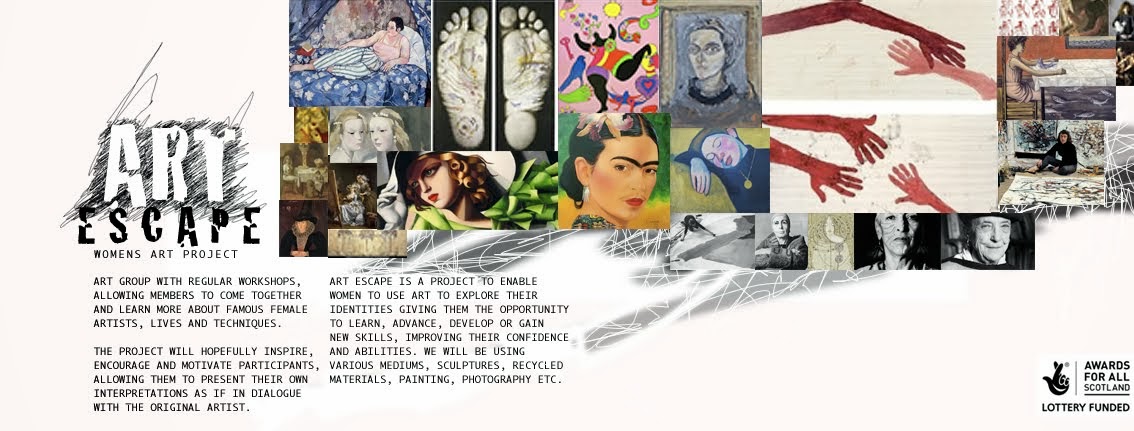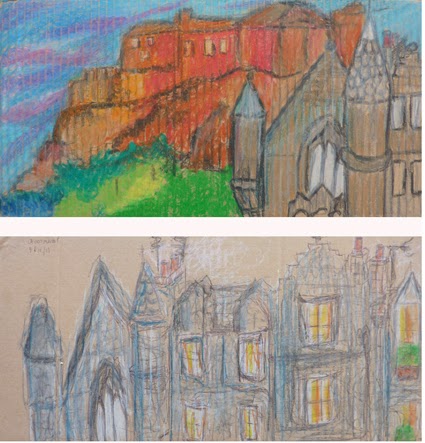Wednesday 23 October 2013
Tuesday 22 October 2013
Thursday 17 October 2013
Lois Dodd
1927, American painter.
Lois Dodd was educated at the Cooper Union in New York City
from 1945-1948 and the only woman founder of the Tanager Gallery, which was
integral to the Tenth Street-avantgarde scene of the 1950s where artists began
running their own coop galleries.
Lois Dodd is known primarily for her observational paintings
of landscapes, nudes and still lives. Her paintings through windows, some in
Maine and some in New York, include the striking 1968 piece that introduces the
show that is filled with squares and blocks incorporating the window frame into
its near geometrically abstract composition.
"I would find it, see it, and say 'that's exciting' but
I don't want to set things up" she stated in an interview.
Most, if
not all, of the outdoor scenes were done "plein air"...that is,
painted and largely completed outdoor...a challenge given the constantly
changing light and other natural conditions.
Wednesday 9 October 2013
Lygia
Clark
Her Mobius strip (Caminhando, 1964) couldn't exist in a gallery. It only exists when somebody touches it, when somebody cuts the strip into infinity creating an endless path. The artwork is the action, but there is still an object that is about to disappear completely. While she was teaching at Sorbonne, she realized that art could be therapy. In a society where body had been forgotten and ignored, recovering it could be a catharsis, a way to be aware of ourselves, of our body and what surround us. In Phenomenology of Perception (1945,) the philosopher Maurice Merleau-Ponty writes that when we touch something is not the object what we feel, but our own body in contact with this object. The new surface’s contact is the way to know that we do exist.
This is Lygia Clark’s goal: returning the body that we have forgotten. In her following works the object is less and less important: in Baba Antropofagica (1973) people pull from their mouths a spittle-drenched thread until it covers a person who lies on the floor. People vomit thread, or maybe they “vomit experiences”. We don’t need objects anymore, our body has become the tool for a catharsis that allows us to expel fears and traumas.
“Ritual without myths”, Lygia used to said. Art, at last, is life itself.
“If a lamp
can be considered an art work, why not our life itself? This Foucault's
sentence sums up Lygia Clark's work. Connecting art and life. She went through
a long way to get to this conclusion, a long way where every step was a crisis,
where every step was painful but needed. Her first paintings were connected to
Constructivism, regular shapes reminiscent of Cubism, that very soon started to
fight to get off the wall. Her Beasts (1962-64) did it: they fell from the wall and
they were able to move like little animals, but only when somebody touched
them. They didn't have right or left side, no front or back, little creatures waiting to be touched.
But some of these pieces were installed in a gallery surrounded by glass, in
cases: they were dead inside, like trapped corpses, and Lygia decided that it
would be the last time for her to exhibit in a gallery.
Her Mobius strip (Caminhando, 1964) couldn't exist in a gallery. It only exists when somebody touches it, when somebody cuts the strip into infinity creating an endless path. The artwork is the action, but there is still an object that is about to disappear completely. While she was teaching at Sorbonne, she realized that art could be therapy. In a society where body had been forgotten and ignored, recovering it could be a catharsis, a way to be aware of ourselves, of our body and what surround us. In Phenomenology of Perception (1945,) the philosopher Maurice Merleau-Ponty writes that when we touch something is not the object what we feel, but our own body in contact with this object. The new surface’s contact is the way to know that we do exist.
This is Lygia Clark’s goal: returning the body that we have forgotten. In her following works the object is less and less important: in Baba Antropofagica (1973) people pull from their mouths a spittle-drenched thread until it covers a person who lies on the floor. People vomit thread, or maybe they “vomit experiences”. We don’t need objects anymore, our body has become the tool for a catharsis that allows us to expel fears and traumas.
“Ritual without myths”, Lygia used to said. Art, at last, is life itself.
(Ana González Chouciño)
Monday 7 October 2013
Although I could not relate to all of Clark's work, I was struck by her interactive sculptures and the idea that art is only created when someone interacts with one of her works. She was appalled when museums encased her work in glass boxes rendering them lifeless. Using recycled materials (CDs, wrapping paper) I constructed moveable, interlocking objects which would, I hope, invite the viewer to 'play'. For me the unexpected reflection of the mirrors on the ceiling with objects appearing as blurred shadows was the most exciting result.
I am working on a large painting inspired by a photograph of the CDs which is compelling due to the vivid colours and repeated circular planes in all directions. (Elise Gibbons)
Lygia Clark
Brazilian 1920 - 1988
Lygia Clark was a Brazilian artist best known for her
painting and installation work. She was often associated with the Brazilian
Constructivist movements of the mid-20th century and the Tropicalia movement.
Her artistic career began in the 1950s in abstract art, and
particulary in a critical examination of the Constructivist in the Modern
Movement to which, as a member of the Grupo Frente in Rio de Janeiro during the
mid-1950s, she devoted a great deal of attention. Soon the social utopias of
the Constructivists no longer seemed enough for her and she became a founder
member of the neo-concrete movement in Brazil.
The Bichos, 1960, are abstract metal objects whose
individual parts are linked by hinges, which allows them not only to be moved,
but also invites the observer to handle them. With this step, her sculptural
production revealed new possibilities for the integration of tactile modes of
experience.
Caminhando, 1963, invited people to glue a strip of paper
into a Moebius Strip and to cut along the middle of it with a pair of scissors,
until the remaining strip was too narrow to be cut any more. Clark remarked in
this connection that the action should make the actor question binary way of
thinking in everyday life...right and left, and up and down prove to be invalid
categories for a Moebius Strip.
Baba antropofágica
In
collective works like «Túnel» or «Objetos relacionais,» Lygia Clark initiates
psychic processes of exchange which transform the dichotomy of subject and
object. In doing so, she follows the transgressive logic of «devouring» and
«vomiting». The reception of «Baba antropofágica» («Cannibalistic Saliva») also
relies on the documentary film «O mundo de Lygia Clark,» filmed by Eduardo
Clark in 1973. But escaping this phantasmal staging of the body seems almost
impossible: kneeling over a guinea-pig-like subject lying on the floor, a
figure pulls from its mouth—like spiders do from their bodies—a
spittle-drenched thread and spins a cocoon around the reclining figure. The
precarious division of subject and object is eliminated by this thread-like
weaving, with the gestural webbing of the passive subject completing the
inversion of the internal and external. In the retrospective, these interactive
aspects might have been what was most convincing. In contrast to Performance
and Body Art, Lygia Clark understood herself to be an initiator of processes,
and was most successful in this respect when her haptic attempts on orderings
were targeted at inter-subjective body politics.
Subscribe to:
Posts (Atom)














